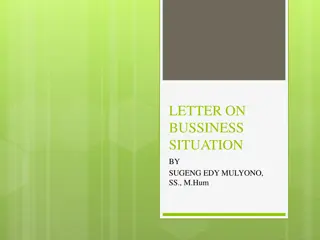Inquiry Question
Explore the impact of ethical belief systems like Confucianism, Legalism, Taoism, Buddhism, and Shintoism on governance in East Asian countries. Delve into the influence of Chinese belief systems on the Mongol rule and the Ming Dynasty, examining both positive and negative effects.
Download Presentation

Please find below an Image/Link to download the presentation.
The content on the website is provided AS IS for your information and personal use only. It may not be sold, licensed, or shared on other websites without obtaining consent from the author.If you encounter any issues during the download, it is possible that the publisher has removed the file from their server.
You are allowed to download the files provided on this website for personal or commercial use, subject to the condition that they are used lawfully. All files are the property of their respective owners.
The content on the website is provided AS IS for your information and personal use only. It may not be sold, licensed, or shared on other websites without obtaining consent from the author.
E N D
Presentation Transcript
Inquiry Question Should ethical belief systems be used to guide a government?
Supporting Questions Supporting Question 1: Supporting Question 2: Supporting Question 3: What are the belief systems of East Asian Countries? How did Chinese belief systems affect Mongol rule? How did Chinese belief systems positively and negatively impact the Ming Dynasty?
East Asian Classical Belief Systems Classical Period: 1000 BC to AD 500 Five Primary Belief Systems: Confucianism Legalism Taoism Buddhism Shintoism Confucianism Symbol Legalism Buddha Statue Taoism Symbol
Supporting Questions Supporting Question 1: Supporting Question 2: Supporting Question 3: What are the belief systems of East Asian Countries? How did Chinese belief systems affect Mongol rule? How did Chinese belief systems positively and negatively impact the Ming Dynasty?
Confucianism Philosophy created by Confucius c. 500 BC Confucianism is the most popular Chinese philosophy and is still followed in China today. Confucianism is not a religion No sacred text No description of a belief in the afterlife Depiction of Confucius
Confucian Beliefs and Daily Life Filial Piety respect for parents / honor your family Five Relationships Father to son Husband to wife Ruler to subjects/people Older brother to younger brother Friend to friend Depiction of Daily Life in Classical China
Confucian Political Beliefs Confucius believed that people were good by nature. Rulers should set a good example for their people. Depiction of Confucius Teaching Good Ruler = Good People
Important Facts about Confucianism Followers of Confucius recorded his teachings and beliefs in the Analects. Confucius also emphasized the importance of education.
Legalism Legalism is a political philosophy created by Han Fei c. 250 BC People are evil by nature Strong government must control Ruler must enforce punishments Education and free thought can be threat to government and law Legalist philosophy suggests that people are evil by nature Because of this, a ruler must be strict and have harsh punishments Depiction of Han Fei
Taoism A philosophy created by Lao-tzu c. 500 BC. Contemplate the Tao, or the way of the universe Man must study nature Must plan carefully in advance Encourages compassion and kindness Rejects idea of government "Be still like a mountain and flow like a great river." Lao Tzu
Buddhism Is a Religion Originally from India C. 300 CE Silk Road Siddhartha Gautama In China by 1st Century BC Core Beliefs: Desire is source of all suffering To eliminate suffering is to eliminate desire Life of moderation Depiction of Siddhartha Gautama
Shintoism Is a Religion Originally from Japan AD 500 Core Beliefs: Many gods called Kami Kami inhabit everything Respect family Love nature Be clean Worship kami Shinto Shrine

 undefined
undefined






















